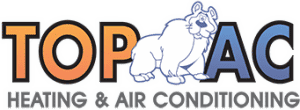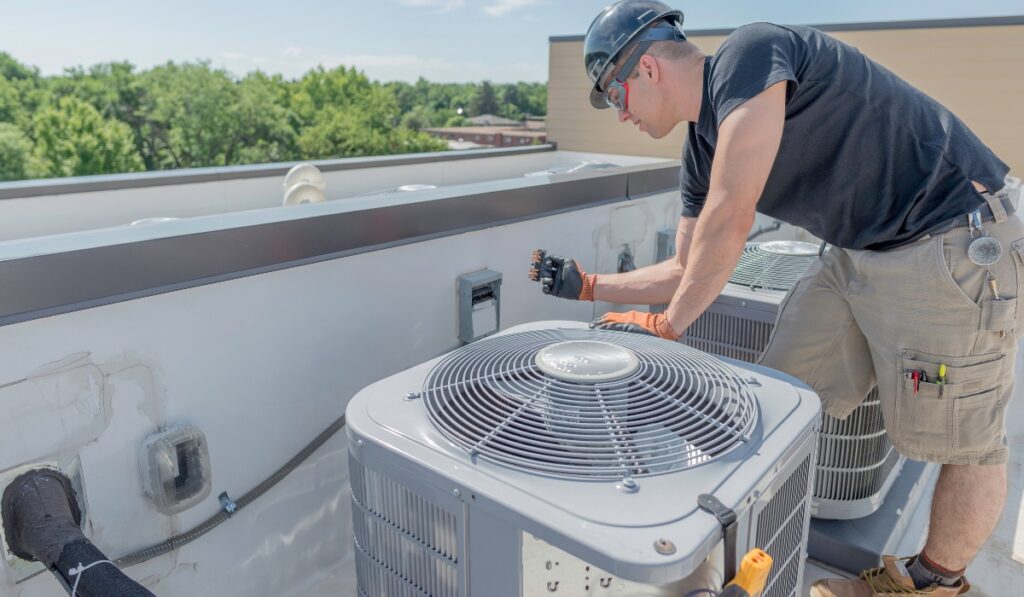An efficient HVAC system is crucial for year-round comfort, but noisy operations can disrupt peace and tranquility. Thankfully, numerous strategies exist to quieten your HVAC system and create a serene indoor environment. This ultimate guide explores various HVAC noise reduction solutions catering to different budgets and system types.
Understanding the Source of HVAC Noise
Before diving into solutions, it’s essential to identify the culprit behind the noise. Here are some familiar sources of HVAC noise:
- Airflow: Air movement through ducts and vents can create whistling or rattling sounds.
- Vibrations: Loose components, worn bearings, or an unbalanced blower can cause vibrations that translate into noise.
- Compressors: Compressors are responsible for pressurizing refrigerant, and their operation can generate humming or clicking noises.
- Ducts: Leaky or improperly sized ducts can increase air velocity, resulting in louder operation.
You can choose the most appropriate solution for a quieter HVAC system by recognizing the noise source.
DIY Solutions for Budget-Conscious Noise Reduction
For those seeking cost-effective solutions, several DIY approaches can significantly reduce HVAC noise:
Addressing Airflow Noise
- Weatherstripping: Gaps around vents and registers can allow air to escape, creating whistling noises. Sealing these gaps with weatherstripping helps maintain proper airflow and reduces noise.
- Cleaning Air Filters: Clogged air filters obstruct airflow, forcing the blower to work harder and generate more noise. Regularly cleaning or replacing air filters ensures optimal airflow and minimizes noise.
- Strategic Furniture Placement: Strategically placing furniture near noisy vents can help absorb sound and muffle noise. Consider using bookcases, plants, or thick curtains for noise absorption.
Mitigating Vibration Noise
- Tighten Loose Parts: Over time, screws, bolts, and other fasteners in the HVAC unit can loosen, causing vibrations and noise. Regularly inspect your system and tighten any loose components.
- Rubber Isolation Pads: Placing rubber isolation pads under the HVAC unit can dampen vibrations and prevent them from transferring to the floor or walls.
Quieting Duct Noise
- Duct Sealing: Leaky ducts allow air to escape and create unwanted noise. Sealing leaks with mastic sealant or metal tape can significantly reduce noise transmission.
- Insulating Ducts: Wrapping exposed ducts in insulation materials like fiberglass or rock wool helps dampen noise and improve system efficiency.
These DIY solutions are a great starting point for tackling HVAC noise. However, more substantial problems might require professional intervention.
Professional Solutions for Enhanced Noise Reduction

For significant noise reduction, consider these professional solutions:
Upgrading System Components
- Variable-Speed Blowers: Traditional single-speed blowers operate at total capacity, generating significant noise. Upgrading to a variable-speed blower allows for quieter operation at lower speeds.
- High-Efficiency Furnaces: Newer, high-efficiency furnaces are generally quieter than older models. Consider replacing an aging furnace with a quieter, more efficient unit.
- Silencer Installation: Professionals can install silencers on noisy components, such as ductwork or compressors, to absorb sound waves and reduce noise transmission.
Optimizing System Design
- Duct System Redesign: Improper duct sizing or layout can contribute to excessive noise. A qualified HVAC technician can assess your duct system and recommend modifications for improved airflow and reduced noise.
- Equipment Isolation: Installing vibration isolation pads or springs under the HVAC unit can significantly reduce noise transfer to the surrounding structure.
Preventive Maintenance for Long-Term Noise Reduction
- Regular System Maintenance: Scheduling regular maintenance by a qualified HVAC technician helps identify potential noise problems early on. Professionals can lubricate moving parts, tighten loose components, and ensure optimal system operation, minimizing noise generation.
Consulting a professional HVAC technician is highly recommended for diagnosing the root cause of the noise and implementing the most suitable solution for your specific system and budget.
Additional Considerations for a Quieter Home
- Location of the HVAC Unit: If possible, consider relocating the unit to a less noise-sensitive area, such as a basement or utility closet.
- White Noise Machines: For masking residual noise, consider using white noise machines to generate a constant, ambient sound that can help mask faint HVAC noises, especially in bedrooms.
Implementing a combination of these strategies can significantly reduce HVAC noise and create a peaceful and comfortable home environment.
Call TOP AC Inc. for a Quieter and More Efficient HVAC System
If you’re struggling with noisy HVAC operations in Los Angeles, CA, don’t hesitate to contact TOP AC Inc. Our team of certified HVAC technicians has the expertise to diagnose the noise source and recommend the most effective solution for your unique needs.
Here’s what TOP AC Inc. can do for you:
- Comprehensive Noise Diagnosis: Our technicians will thoroughly inspect your HVAC system to identify the exact cause of the noise.
- Expert Solutions: We offer a variety of noise reduction solutions, from DIY maintenance tips to advanced system upgrades.
- Professional Service: Our team is committed to providing exceptional service, ensuring your HVAC system operates quietly and efficiently.
- Free Estimates: We offer free estimates for all our noise reduction services so you can make informed decisions about your HVAC system.
Don’t let noisy HVAC disrupt your peace and comfort. Contact TOP AC Inc. today!

